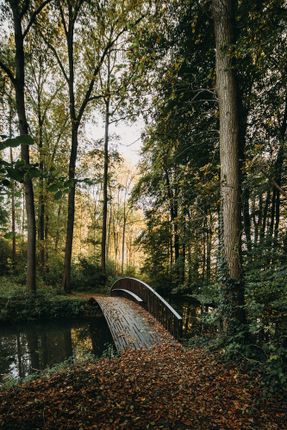
Windesheim Bridges
LEAD ARCHITECTS
Bart Reuser, Marijn Schenk, Michel Schreinemachers with Wiebe Strick, Eilish Camplisson
CATEGORY
Installations & Structures, Pedestrian Bridge, Detail
CONTRACTOR
AIC Partners
LANDSCAPE ARCHITECT
H+N+S Landschapsarchitecten
CONSTRUCTOR
Abt
LOCATION
Windesheim, The Netherlands
Text description provided by architect.
The monumental estate Windesheim has been enriched with eight new bridges, designed by NEXT architects. Together they make a series of recognizable connection points and seating areas on the walking route through the park.
The elegant arch bridges appear and disappear in the landscape. The design is not a literal reconstruction, but an interpretation of the style characteristics of the historical heritage, with a modern, contemporary twist. Past and present come together.
The historical research and the master plan for the renovation of the estate were drawn up by H+N+S Landscape Architects. NEXT architects designed 8 new bridges for the estate to add a new layer and make the park more attractive and accessible.
Windesheim Estate. Windesheimis an estate of approximately 660 hectares located near the town Windesheimin the Dutch region of Overijssel, south of Zwolle. The history of the estate dates back to the fourteenth century.
. The accompanying park was designed in 1789 by the Dutch landscape architect Jacob Otten Husly. In the heart of the estate are the remains of Huis Windesheimin, an old estate house.
The historic buildings on the site, as well as the monumental fences, bridges, gardens, and garden ornaments are protected national monuments.
Jewellery of the estate. With the construction of the park bridges, an interesting layer of 'garden jewellery' has been added to the estate in the style of Husly's romantic park design.
The eight new bridges are important landmarks on the walking route and are part of the landscape
By following the shape of the meandering path structure, the bridges accompany the carefully programmed walking route. The Ruin Bridge is an exception; this structure has been designed as a viewing platform above the moat, which offers a view of the remains of the historic mansion. It is a unique viewpoint where the different historical layers of the estate become clearly visible.
Integration with the landscape. The various bridges are in line with English landscape architecture in terms of style characteristics. In the eastern part of the estate, the English Bosch, traces of the rich history have largely been lost.
Two arched bridges have been realized for this part of the estate that offer a view of the water, lifting the passenger above the landscape.
The bridges connect to the path structure with a smooth transition of the deck and railings. Landscape and bridge flow into each other. In the northern part of the estate, the paths are narrower. The bridges that are located here are designed as a gangway over the water with a single railing.
By using Corten steel, the bridges appear and disappear in the landscape. On the one hand, the brown rust colour of the material blends in seamlessly with the forest, but on the other hand, the material is fairly rough and sharp, which offers a contrast with its environment.
The white railings reinforce that contrast and accentuate the bridges and their leading lines. The deck features a perforated pattern that is based on a bridge constructed from wooden slats. The slits in the deck offer a small view of the water and emphasise the seamless integration of the new connections in the Windesheiminestate.
By using Corten steel, the bridges appear and disappear in the landscape. The white railings reinforce that contrast and accentuate the bridges and their leading lines.
The deck features a perforated pattern that is based on a bridge constructed from wooden slats.




















